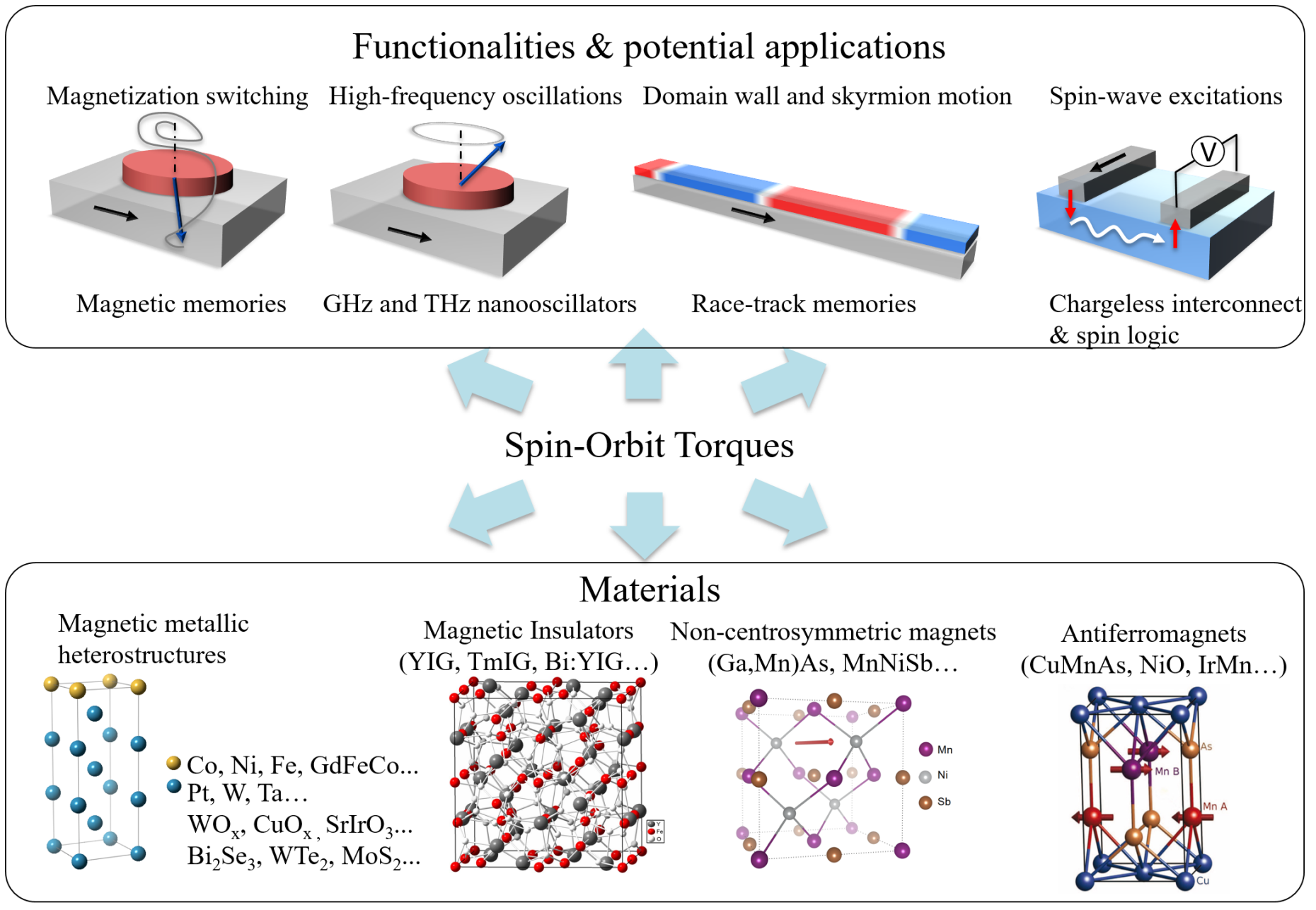Spintronics
A central challenge in spintronics is to replace the use of external magnetic fields to control the magnetization and the flow of electrons in integrated circuits including magnetic devices. This can be done, for example, by applying local electric fields or currents on a magnetic medium to write information or drive an actuator, which enables significant advantages in terms of the functionality, speed, miniaturization, and energy consumption of such devices.
One of our projects in this field concerns the study of current-induced spin-orbit torques in ferromagnetic layers. A spin torque is an effect by which the magnetization of a thin film can be modified by injecting a spin-polarized current into the film itself. Typically, a spin torque is associated with the transfer of spin angular momentum between a “polarizer” and a “free” ferromagnetic layer separated by a nonmagnetic spacer, mediated by a spin-polarized electric current flowing perpendicular to the two layers. Recently, however, experiments and theory have pointed out alternative mechanisms to produce spin torques that do not require a polarizer ferromagnet. These mechanisms, which include the spin Hall, Rashba, and Dresselhaus effects, exploit the coupling between electron spin and orbital motion to induce a nonequilibrium spin polarization of the conduction electrons, which eventually gives rise to a torque on the magnetization via the spin transfer mechanism between s- and d-electrons. We refer to such phenomena as spin-orbit torques (SOTs) to underline their common link to the spin-orbit interaction.
Another project concerns the study of the magnetization dynamics induced by currents and fields. Here the aim is to understand the mechanisms that determine the timescales of magnetization reversal using both electrical methods and time-resolved microscopy. Our studies reveal effective strategies to reduce the switching times of magnetic dots and tunnel junctions to below 1 ns.
Finally, we investigate how charge-spin conversion phenomena induced by spin-orbit coupling and interfacial properties affect the longitudinal and transverse resistance of single-layer and multi-layer conductors. These phenomena are important to understand electric transport in complex system as well as to devise novel magnetization sensors.
Review articles
Current-induced spin-orbit torques in ferromagnetic and antiferromagnetic systems, A. Manchon, J. Železný, I.M. Miron, T. Jungwirth, J. Sinova, A. Thiaville, K. Garello, and P. Gambardella, Rev. Mod. Phys. 91, 035004 (2019). Downloadarticle (PDF, 12.4 MB)vertical_align_bottom
The 2020 Magnetism Roadmap, E. Y. Vedmedenko, R. K. Kawakami, D. Sheka, P. Gambardella, A. Kirilyuk, A. Hirohata, C. Binek, O. A. Chubykalo-Fesenko, S. Sanvito, B. Kirby, J. Grollier, K. Everschor-Sitte, T. Kampfrath, C.-Y. You and A. Berger, J. Phys. D: Appl. Phys. 53, 453001 (2020). Downloadarticle (PDF, 5 MB)vertical_align_bottom
Opportunities and challenges for spintronics in the microelectronics industry, B. Dieny, I. L. Prejbeanu, K. Garello, P. Gambardella, P. Freitas, R. Lehndorff, W. Raberg, U. Ebels, S. O. Demokritov, J. Akerman, A. Deac, P. Pirro, C. Adelmann, A. Anane, A. V. Chumak, A. Hirohata, S. Mangin, Sergio O. Valenzuela, M. Cengiz Onbaşlı, M. d’Aquino, G. Prenat, G. Finocchio, L. Lopez-Diaz, R. Chantrell, O. Chubykalo-Fesenko and P. Bortolotti, Nature Electr. 3, 446 (2020). Downloadarticle (PDF, 3.6 MB)vertical_align_bottom

